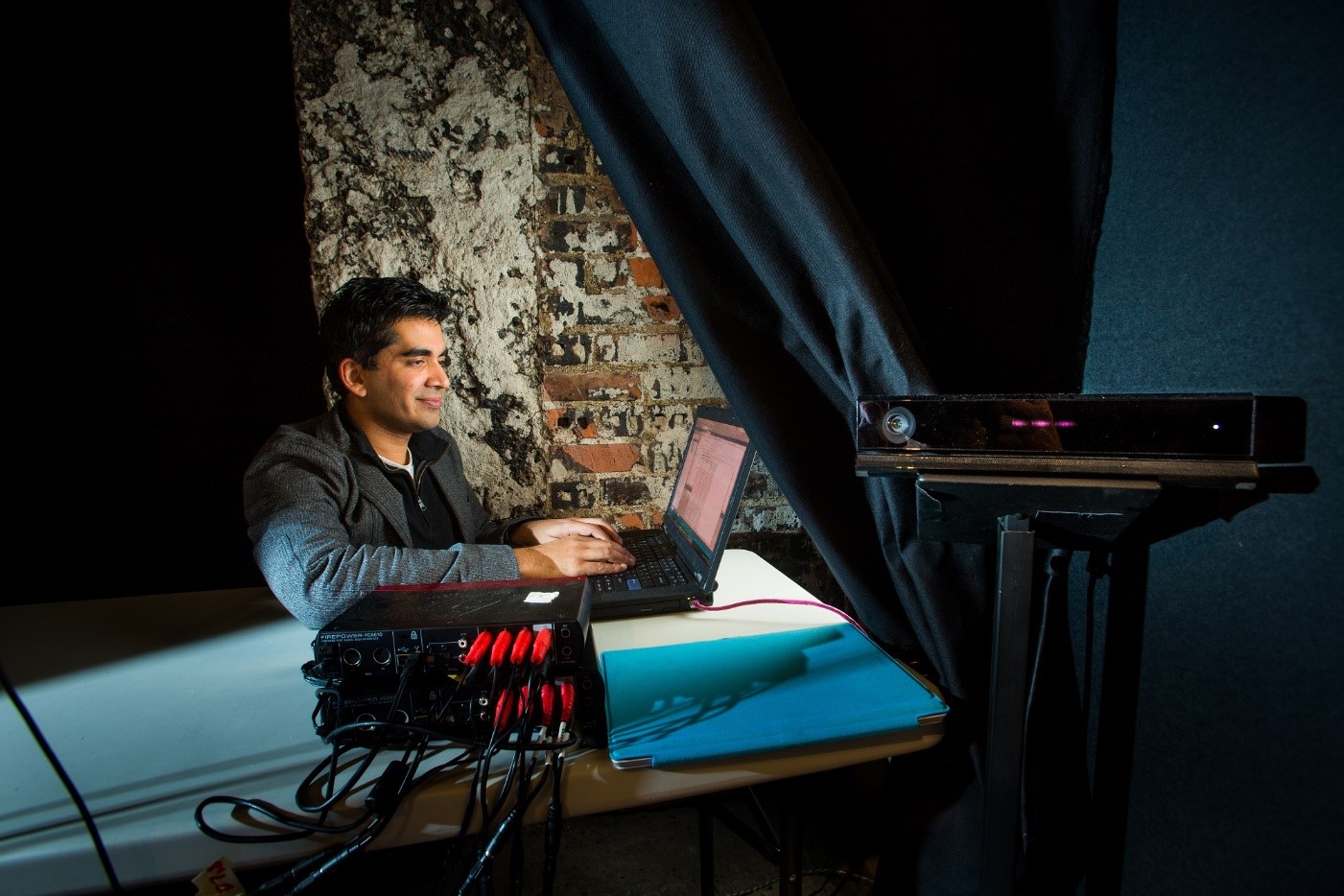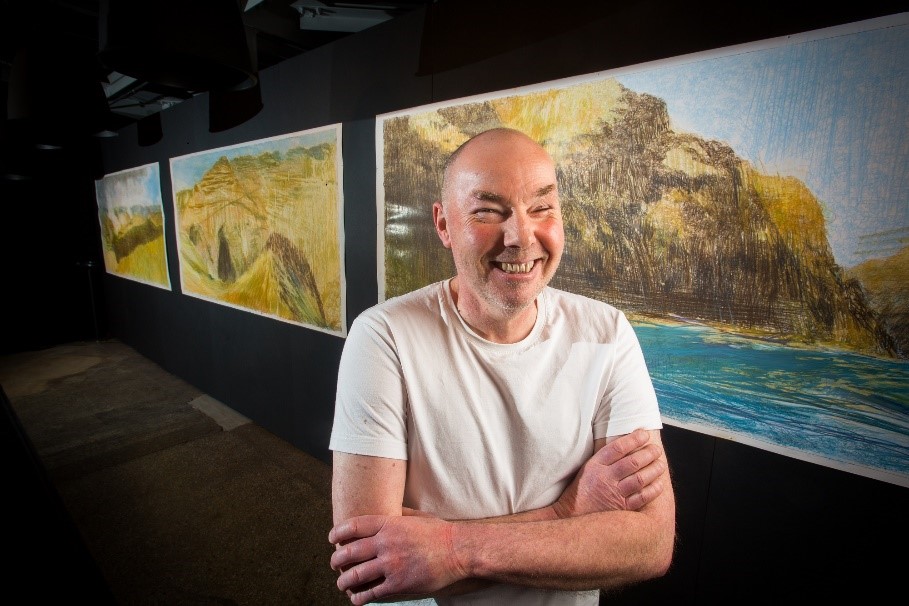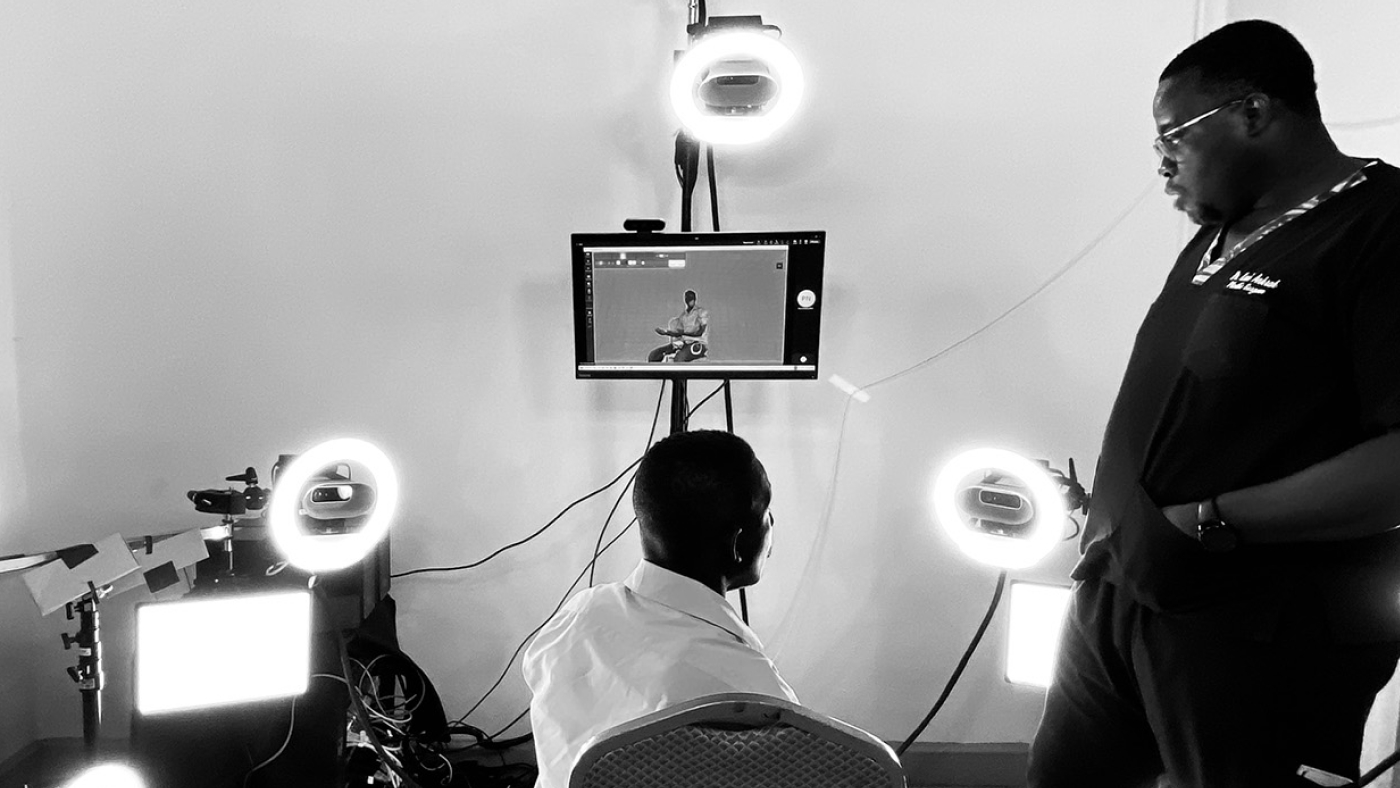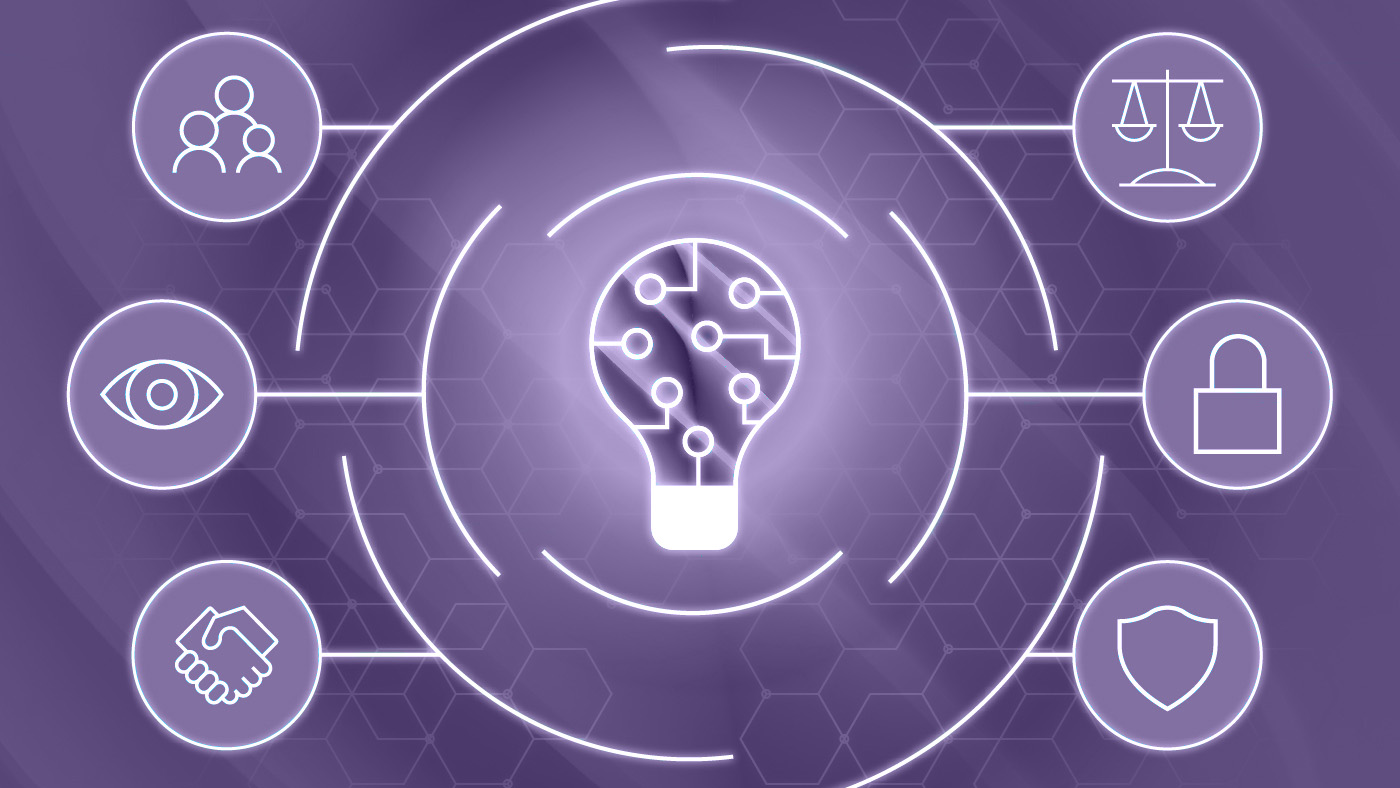By Vanessa Ho, Microsoft News Center Staff. Follow her on Twitter (opens in new tab).

Artist Keith Salmon, left, and Microsoft researcher Neel Joshi stand in front of “The Oregon Project” at the King Street Station in Seattle. Photos by Dan DeLong
A well-known Scottish landscape painter, Keith Salmon (opens in new tab) creates ethereal, moody abstracts of skylines and mountains inspired by the rugged highlands in his country. Trained in fine arts and sculpture, Salmon has broadened his techniques over the years as his eyesight has diminished, learning how to smash paint into texture and scratch pastels for scribbles to evoke less a depiction of place and more an exquisite experience of the wild.
Spotlight: Blog post
Eureka: Evaluating and understanding progress in AI
How can we rigorously evaluate and understand state-of-the-art progress in AI? Eureka is an open-source framework for standardizing evaluations of large foundation models, beyond single-score reporting and rankings. Learn more about the extended findings.
Last month, Salmon, who is legally blind, debuted an installation with innovative research from Microsoft that enriches his art even more, with proxemic audio to interpret two-dimensional images. Called “The Oregon Project (opens in new tab),” it uses four Kinects, 15 overhead speakers and 54 soundtracks to produce an acoustic and spatial interpretation of three drawings Salmon did of the beautifully remote Hells Canyon area in Oregon. The installation premiered in Seattle at the 9e2 exhibit (opens in new tab) of art and technology as a powerful new way for Salmon to create and for people with low vision to experience and enjoy visual art.
“It would be great to think that in a few years, you might go to a national museum or art gallery and this technology would be there as part of the experience,” says Salmon, who began to lose his sight in the ‘80s due to diabetic retinopathy. With his sight limited to a small amount of vision in one eye for many years, he’s been able to adapt, paint and hike with his partner Anita Groves as his guide. You can watch the video with audio-description here (opens in new tab).
In front of each drawing is a 3D space containing 18 soundtracks that can be played. The Kinects track movement to trigger different sounds, making the art lively and interactive for people with and without vision. From afar, observers can hear birdsong, rushing water and grass swishing in the wind — recorded in Hells Canyon by Salmon and his collaborators.
Moving closer activates digital tones matched to Salmon’s palette of blue, green, brown and ochre. Stand even closer and you can hear Salmon working in his studio as he scribbles pastels on paper, in an experience that parallels how a sighted person can see details when leaning in. The Kinects also track hand waves to change what you hear, helping observers become part of the piece and make their own acoustic mixes with movement. At the exhibit, adults triggered sounds primarily by walking, while kids jumped and waved their arms to produce a different blend of noise.
“As a way of moving from an outer to inner layer to the drawings, natural sounds to industrial sounds works really well,” Salmon says. “It has a wonderful, atmospheric, spacey, landscape-y feel that pulls the whole thing together.”
The sound system stems from an experimental project called Eyes-Free Art, created by Microsoft researchers Neel Joshi (opens in new tab) and Meredith Ringel Morris (opens in new tab) and former Microsoft intern Kyle Rector (opens in new tab) to explore how technology can help people with low vision access visual art.
Many museums offer experiences for people with visual impairment, from detailed audio descriptions of art to special events where people can touch sculptures with gloved hands. But the researchers wanted to create a more personalized experience that was still communal, and something less directed and curated by docents.
After exploring different ideas, they decided to create a Kinect-enabled sound system based on proxemics, the study of how people use space to define social interactions. And they wanted sound and visuals to be equally aesthetic and important, and rejected anything that felt like a “bolted-on” accessibility tool.
“Visual exploration is a personal experience and is based on distance — as I get closer, I see different types of details — so we wanted to mimic those ideas in audio,” says Joshi, who specializes in computer vision and computational photography. He’s also a painter and interactive-installation artist involved in the local arts community.

Microsoft researcher Neel Joshi works on the Kinect-enabled sound system of “The Oregon Project.”
Last year, researchers invited people with low vision to test a prototype built with programmed music, narration and sounds acoustically interpreting paintings by Frida Kahlo, Henri Matisse and others. The testers overwhelmingly enjoyed the experience, and one woman, an art lover who had stopped going to galleries after losing her sight, cried in joy. But the team knew the system wasn’t “art.” They knew they needed to do more.
Connecting with local artists, Joshi began working with Salmon to create a new piece with Salmon’s art and Microsoft research. They collaborated with Seattle filmmaker and photographer Dan Thornton (opens in new tab), Scottish sound engineer Graham Byron (opens in new tab) and 9e2 organizer John Boylan (opens in new tab) to display it at the nine-day 9e2 event of installations and performances on art, science and technology. Although this particular project has been experimental and there are no immediate plans to make this specific system available broadly to the public, researchers have filed a patent for Eyes-Free Art and hope to continue building more accessible, artistic experiences.
Amos Miller, a Microsoft researcher with visual impairment who works with the company’s Accessibility group, calls the installation “inherently inclusive,” allowing him and others to experience art personally and socially, and in the way the artist intended.
“It’s evidence that you can create really positive, inclusive experiences,” says Miller, who is part of the Cities Unlocked (opens in new tab) project, which creates 3D soundscapes to help people with low vision navigate their surroundings.
For Sheri Richardson, president of Seattle advocacy group Vision Loss Connections (opens in new tab) and blind since infancy, the installation was a vibrant, sensory way to explore art from different perspectives and not rely on someone else’s interpretation. She especially liked being able to visualize the artist in the mountains with sounds from Hells Canyon.
“The technology of the Kinects and the sound moving with you as you move into the paintings really makes it experiential and brings out the emotions,” says Richardson.

Artist Keith Salmon in front of his drawings of Hells Canyon in «The Oregon Project»
For Salmon, whose limited vision began to further deteriorate a few years ago, Eyes-Free Art has given him hope to continue his artistic career for many more years.
“It’s been amazing,” he says. “I’ve now got a future. If my sight carries on getting worse, I can continue making art and draw with sound. It’s a case of learning and adapting.”
“The Oregon Project” will be on display at the Tent Gallery at the Edinburgh College of Art in Scotland in April of 2017.
Learn more about Salmon and “The Oregon Project” at Microsoft’s Facebook (opens in new tab), Instagram (opens in new tab) and Twitter (opens in new tab) pages.





